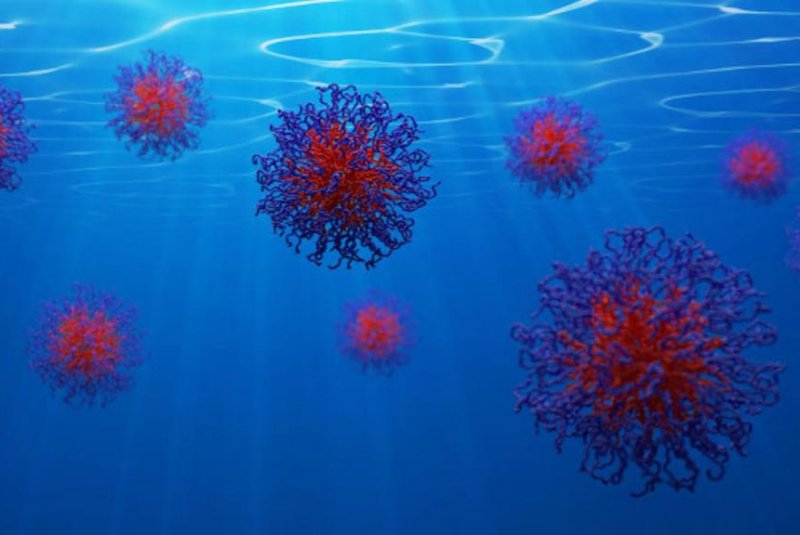Scientists used a new kind of transmission electron microscope to analyze the formation of nanoparticles called micelles in 4D. Photo by Northwestern University
April 25 (UPI) -- Material scientists at Northwestern University have designed a transmission electron microscope, or TEM, to capture high-resolution, multi-frame videos of nanoparticles.
The technology allowed researchers to analyze nanomaterial formation across space and time -- in four dimensions. The researchers' breakthrough, detailed this week in the journal ACS Central Science, could pave the way for innovations in the design and synthesis of drugs, paints, coatings, lubricants and other advanced materials.
"We have demonstrated that TEM does not have to be a microscopy method solely used to analyze what happened after the fact -- after a reaction ends," Nathan Gianneschi, professor of chemistry, materials science and engineering at Northwestern, said in a news release. "But, rather, that it can be used to visualize reactions while they are occurring."
Until now, scientists could only capture snapshots of nanoparticles, limiting their ability to understand their formation.
"Now, we are beginning to see the evolution of materals in real time, so we can see how transformations occur," said Brent Sumerlin, a professor of chemistry at the University of Florida. "It's mind blowing."
In the lab, Sumerlin regularly uses a technique called polymerization-induced self-assembly, or PISA, to create a type of nanomaterial called micelles, which have a variety of functions.
To better understand how micelles actually form, Sumerlin and his colleagues integrated PISA with TEM, using the microscope's laser to trigger the reaction that begins the self-assembly process. The microscope's camera system wasn't able to capture the transformation in its entirety, but it did observe a larger portion of it.
"I'm pleasantly surprised that we pulled this part off," Gianneschi said. "But optimizing the system -- so we can see the reaction's entire trajectory -- will keep us busy for the next few years."















